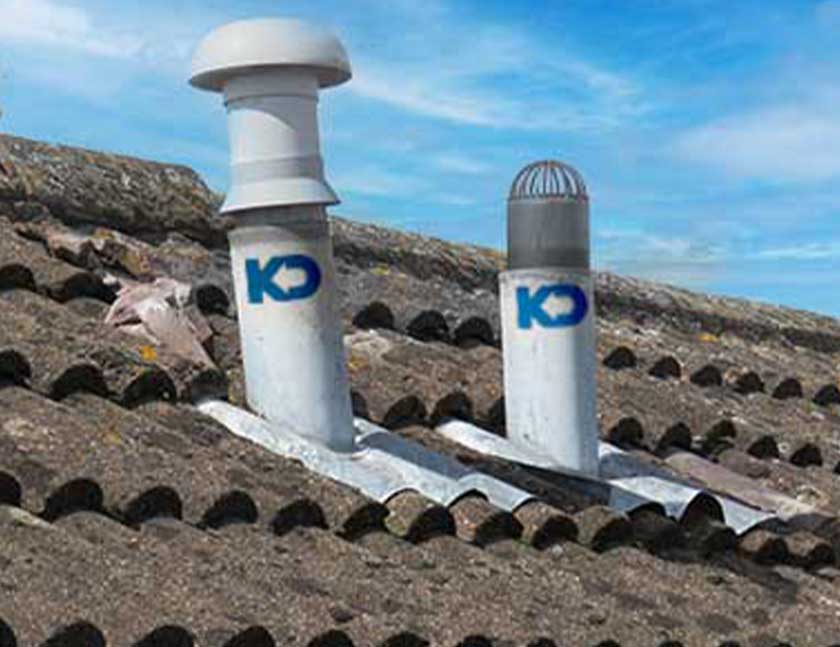The Essential Role of Adequate Ventilation in Plumbing Systems
The Essential Role of Adequate Ventilation in Plumbing Systems
Blog Article
Listed here on the next paragraphs you might get a bunch of incredibly good content all about What Is a Plumbing Vent and Why Is It Important.

Proper ventilation in plumbing systems is typically ignored, yet it is vital for preserving the capability and security of your home's plumbing. Air flow helps control atmospheric pressure, prevent the buildup of dangerous gases, and ensure the efficient removal of waste. In this guide, we will certainly check out the relevance of proper pipes ventilation, exactly how it works, and the advantages it offers your plumbing system.
Comprehending Air Flow in Plumbing
Air flow in plumbing refers to the network of pipes that enable air to stream via the water drainage system. These vents offer numerous purposes, consisting of controling air pressure within the pipelines, avoiding sewage system gases from entering the home, and helping in the smooth flow of wastewater.
How Ventilation Functions in Pipes Solutions
Atmospheric Pressure Guideline
Proper air flow maintains balanced atmospheric pressure within the plumbing system. When water moves with pipelines, it displaces air. Without sufficient air flow, this displacement can develop unfavorable pressure, resulting in reduce drains or siphoning of water from traps, which can cause undesirable odors to permeate right into the home.
Avoiding Sewage System Gas Accumulation
One of one of the most important functions of plumbing vents is to prevent drain gases, such as methane and hydrogen sulfide, from gathering within the home. These gases can pose serious health and wellness dangers and are extremely combustible. Vent pipelines permit these gases to get away securely outdoors.
Helping in Waste Removal
Air flow aids in the reliable removal of wastewater by stopping airlocks in the drain system. When air can stream freely via the vents, it enables water and waste to move efficiently via the pipelines, minimizing the risk of blockages and backups.
Kinds Of Plumbing Vents
Main Stack Vent
The main pile vent, additionally called the vent pile, is the key vent in a plumbing system. It prolongs from the major drain align via the roof covering, allowing gases to get away and fresh air to enter the system.
Branch Vent
Branch vents link to the primary pile vent and serve individual components, such as sinks, commodes, and showers. These vents guarantee that each component has adequate ventilation to operate effectively.
Air Admission Valve (AAV).
An Air Admittance Valve (AAV) is a one-way shutoff that permits air to enter the pipes system without the demand for a standard air vent pipeline extending via the roofing system. AAVs are generally utilized in renovations or areas where installing a standard vent is not practical.
Indicators of Poor Air Flow in Plumbing.
Slow Draining Fixtures.
If your sinks, bathtubs, or bathrooms are draining gradually, maybe a sign of inadequate ventilation. Inadequate air circulation can produce a vacuum cleaner impact, making it difficult for water to drain pipes appropriately.
Gurgling Appears.
Gurgling audios coming from drains pipes are often an outcome of air being sucked via water traps as a result of adverse stress in the pipelines. This is a clear indication of insufficient air flow.
Undesirable Odors.
Drain odors inside your home are a red flag that your pipes system is not effectively aerated. This might indicate that drain gases are not being adequately aired vent outside, bring about possibly hazardous problems.
Common Ventilation Mistakes.
Insufficient Vent Sizing.
Making use of undersized air vent pipelines can lead to poor air flow and pressure discrepancies in the system. It's essential to make use of vents that satisfy the particular requirements of your pipes system.
Improper Vent Positioning.
Putting vents too far from the components they offer can decrease their efficiency. Proper positioning makes sure that air can move easily and effectively via the system.
Disregarding Code Requirements.
Building regulations supply certain standards for plumbing ventilation. Disregarding these codes can cause a system that stops working to operate appropriately and may cause pricey repairs or health hazards.
Advantages of Appropriate Air Flow.
Boosted System Efficiency.
Correctly ventilated pipes systems operate a lot more successfully, with less obstructions, faster draining pipes, and much less stress on the pipes. This effectiveness prolongs the life-span of the pipes system.
Improved Air High Quality.
By avoiding drain gases from entering your home, proper ventilation adds to far better interior air quality, making your living environment healthier and extra comfortable.
Preventing Water Damage.
Appropriate ventilation helps stop water from being siphoned out of catches, which can bring about drain gases entering the home and creating water damages over time.
Steps to Guarantee Proper Ventilation.
Consulting Pipes Codes.
Always speak with local pipes codes when designing or modifying your pipes system. These codes offer the necessary guidelines for correct venting and guarantee your system fulfills safety and security requirements.
Normal Inspection and Upkeep.
Normal evaluations can help determine prospective air flow concerns prior to they come to be major problems. Maintenance tasks, such as cleaning up air vent pipes and looking for clogs, are essential for maintaining the system in good working order.
Professional Setup.
For new setups or major adjustments, it's smart to work with a specialist plumbing. They have the expertise to make certain the air flow system is properly developed and installed according to code.
Verdict.
Correct air flow is a crucial component of any kind of pipes system, making sure that it works effectively and safely. By understanding the value of ventilation, acknowledging the indications of poor air flow, and taking actions to maintain your system, you can protect against expensive concerns and secure your home's air quality.
4 Things You Should Know About Your Plumbing Vents
What Plumbing Vents Are
Also called a vent stack, a plumbing vent is a vertical pipe attached to your drain line that runs through your roof. The plumbing vent pipe, or plumbing air vent, removes gas and odors from your plumbing system and allows fresh air to enter the pipes, helping the water to flow out of the drain pipes.
What Plumbing Vents Do
Plumbing vents have two basic functions. One of which is to allow unpleasant smelling wastewater and sewer gasses to escape your plumbing system instead of entering your home. Plumbing vent pipes are typically located on roofs, away from windows, to ensure the fumes exit the home completely.
The other function of the plumbing vent is to move fresh air into your plumbing system. This helps move water through every plumbing fixture in your house, like toilets and sink drains. Think of the way in which you need to let a little air into the bottle as you pour soda in order to make the drink flow smoothly.
Different Types of Plumbing Vents
True vent: This is the most common vent option. In simplest terms, a true vent is a vertical pipe attached to your drain line that exits through the roof. They often function as the main vent that other fixtures can connect to. Re-vent pipe or auxiliary vent: Attached to the drain line near specific plumbing fixtures, re-vent pipes run up and over to connect to the main vent. Common vent: Two plumbing fixtures installed on opposite sides of a wall are typically tied into the vent stack using something known as a sanitary cross. Wet vent: This venting option operates as a drain pipe and a vent at the same time. Wet vent drainage systems drain water from one fixture while venting the air from another. Although they’ve been used for over 100 years, wet vent systems have only recently been added to the plumbing code in many areas. If you’re planning on installing one in a bathroom remodel, make sure you check your local code prior to construction. Loop vent: For free-standing fixtures like kitchen island sinks, loop vents are ideal. These vent pipes run under the floor, rise from the P-trap, and create a loop inside the cabinet sink. Air admittance valve: An AAV is a one-way mechanical valve typically installed at the site of the plumbing fixture. AAVs allow venting to occur without having to tie into a larger venting system. They’re ideal for venting fixtures where you aren’t able to easily connect to an existing vent system. Common Plumbing Vent Issues
Although vent pipes typically don’t have water flowing through them, they’re still subject to many typical plumbing issues. For example, clogs are one of the most common problems associated with sewer vent pipes. If your vent pipe gets clogged, all of your plumbing fixtures tied into the vent stack will be affected.
A sink with a slow drain that bubbles and gurgles or a strong sewage smell around your toilet are both indicators that your toilet vent pipe is clogged. Because most vent pipes exit through the roof, old leaves, twigs or even a bird’s nest could be clogging the pipe.
Clogs in your vent pipe system cause a buildup of negative pressure, meaning that water won’t be able to flow out of your home very well. It’s similar to putting your finger over the opening of a straw to trap water inside. When you remove your finger, the water is able to flow out of the straw.
If you suspect you have any blockage in your vent, make sure you have a professional come examine the situation. Left unchecked, a blocked air vent can lead to other costly repairs, like leaks and sediment buildup.
Under Pressure
Pipe vents are essential aspects of a home’s plumbing system. Owning a home means learning about all sorts of things you never put much thought into before. But by understanding as much as you can about the important systems of your home, you can keep those budgets intact and those anxiety levels low.
https://www.homeserve.com/en-us/blog/home-improvement/plumbing-vents/

Do you like reading up on Essential Plumbing Vent Pipes: Understanding Their Role? Give feedback below. We'd be glad to find out your opinions about this piece. We are looking forward that you come back again later on. Loved our blog entry? Please quickly share it. Let somebody else discover it. I take joy in your readership.
Additional Resources Report this page